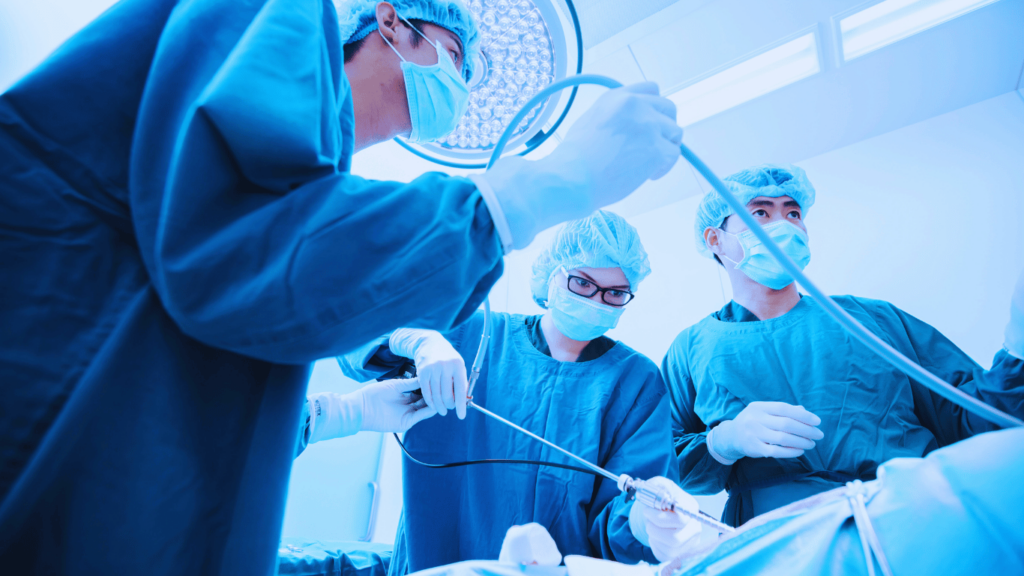No mesh hernia repair
Mr Simon Marsh, 108 Harley Street’s Groin and Hernia expert, is one of the few surgeons who is still carrying out no mesh inguinal hernia repairs.
During a no mesh hernia repair, the hernia is repaired by reducing the hernia and restoring, anatomically, the normal anatomy of the groin. The technique can be considered as based on the Shouldice Technique, pioneered in the famous Shouldice Clinic in Toronto, Canada. Mr Marsh has lectured internationally with the late Robert Bendavid, who was a senior member of the Shouldice Clinic.
Understanding Gilmore’s Groin

What is Gilmore’s Groin? Gilmore’s Groin – so named as it was first recognised by 108 Harley Street’s own founder, the late Mr Jerry Gilmore – is also known as a sportsman’s hernia. It is a painful condition that affects the groin area, commonly experienced by athletes and active individuals. Unlike a traditional hernia, there […]
Gilmore’s groin surgery
Post your rehabilitation if you fail to show any improvement your surgeon will indicate that surgery is required. Gilmore’s Groin can be successfully treated by the surgical restoration of normal anatomy. The success of the surgery depends on accurate diagnosis, meticulous repair of each element of the disruption and intensive rehabilitation. We will provide you […]
Rehabilitation for Gilmore’s Groin
Our team of experts have established a rehabilitation programme for Gilmore’s Groin. Your consultant may recommend this programme as an alternative to surgery. Although if you do need surgery your consultant will advice the program as part of your post-operation recovery process. When doing the exercises, it is important that you activate your “core stability” […]
Adductor Tenotomy
In some cases, the adductor tendon may get repeatedly injured or tears and heals badly causing it to thicken and get rigid. This is because the muscle underneath the tendon is prevented from moving smoothly and when it contracts suddenly, the rigid tendon prevents the muscle contracting properly and the muscle itself tears.
If this happens then your consultant will advise an adductor tenotomy.
What is Adductor injury?
An adductor strain is a common problem amongst athletes and sportsmen and women. The adductor muscle can be injured when there is a forced push off or if the leg is taken forcefully out to the side. Very high forces can be put through the adductor muscles and tendons when an athlete suddenly changes direction […]
Laparoscopic Hernia Repair: What You Need to Know

A hernia occurs when tissue or part of an organ protrudes through a weak spot in the abdominal muscles. Laparoscopic hernia repair is a technique used to fix hernias with as little surgery as possible. Unlike traditional open surgery, laparoscopic hernia repair involves making small incisions through which surgical tools and a camera are inserted […]
Incisional Hernia Repair
An incisional hernia happens through an old scar on the tummy from a previous operation. Surgery Incisional hernias are often more complicated to fix and can be done from the front (open) or from the inside (laparoscopic). Repairing these will often involve a “mesh” to make the area stronger and to try and reduce the […]
Epigastric Hernia
Epigastric Hernia occurs higher up, above the umbilicus, where there may be a weakness between the muscles on either side as they meet in the middle (called the linea alba, or white line), through which the abdominal contents can protrude. This is usually fatty tissue (the omentum) but it can be bowel. Surgery The aim […]
Umbilical Hernia: Everything You Need to Know

An umbilical hernia occurs when a portion of your abdominal contents (fatty tissue between organs or parts of organs) pushes through a weak spot near your belly button. It’s a common condition that can affect anyone, but it’s particularly prevalent among women during or after pregnancy, due to the increased strain on the abdominal area. […]